What is the gut microbiome?
The gut microbiome is made up of trillions, yes trillions, of bacteria, viruses, fungi and archaea. There are so many microorganisms in our gut microbiome that it can weigh up to 2kg! Similar to fingerprints, each and every person on this earth has their own unique gut microbiome. We start developing our unique gut microbiome shortly after birth, where it continues developing mostly during our childhood. Factors that influence the development of our gut microbiome during childhood include illness, antibiotic use, fever, stress, injury, and diet.
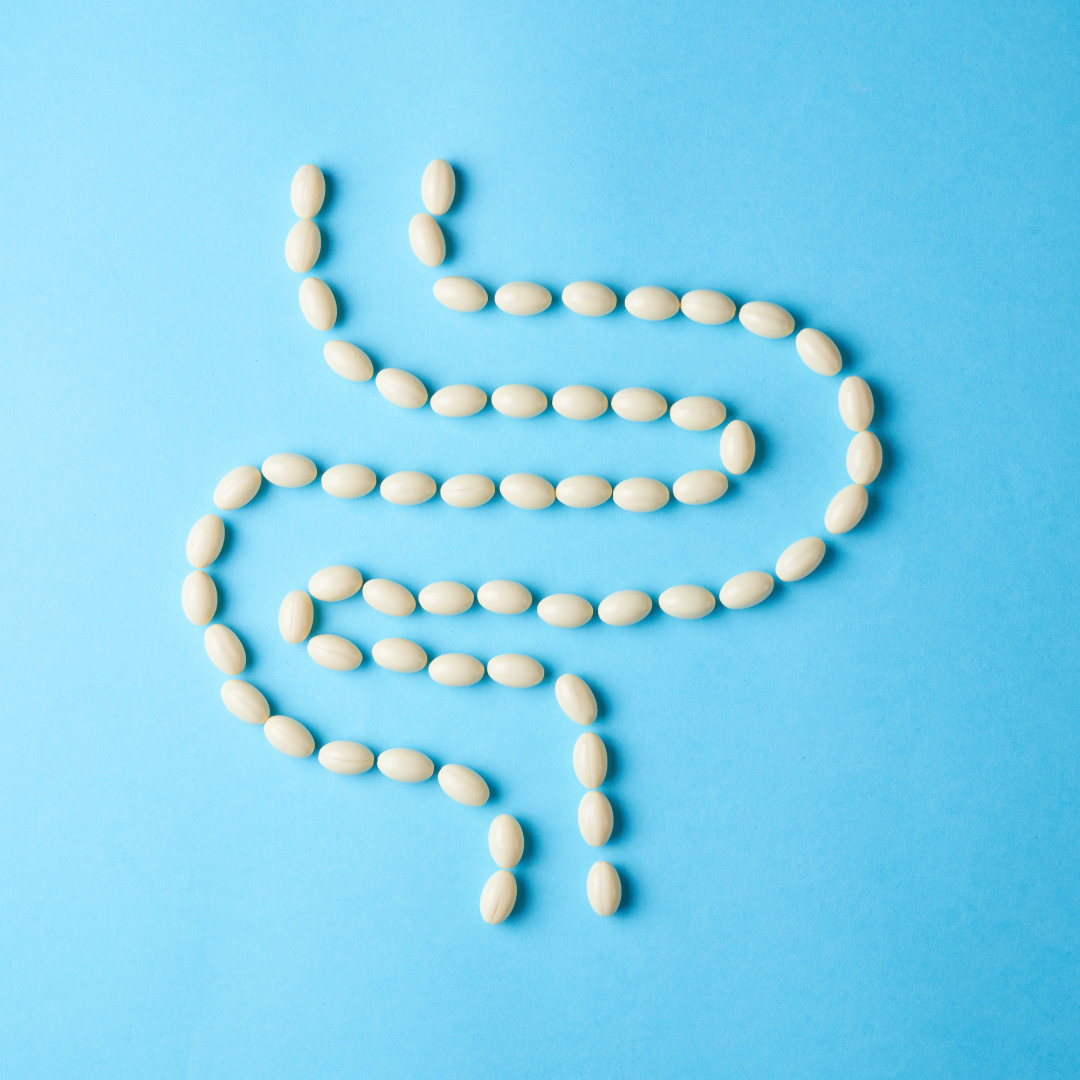
Our gut microbiome has several functions including (but not limited to):
- Digestion of food
- Vitamin and amino acid production
- Short chain fatty acid production (anti-inflammatory)
- Inhibits organisms that cause disease
- Regulates immune health
- Communication between our gut and brain
What can improve our gut microbiome?
You may or may not have heard of probiotics before. Probiotics are live microorganisms that cause a particular health benefit. For example, the probiotic strain Bifidobacterium lactis has been shown to improve constipation. There are thousands of different probiotic strains each with their own health benefits. Many probiotics are not well researched to date, however the two most researched probiotics currently are Lactobacillus and Bifidobacterium. Although usually used as a supplement, natural food sources of Lactobacillus and Bifidobacterium include yoghurt, kefir, and kimchi.
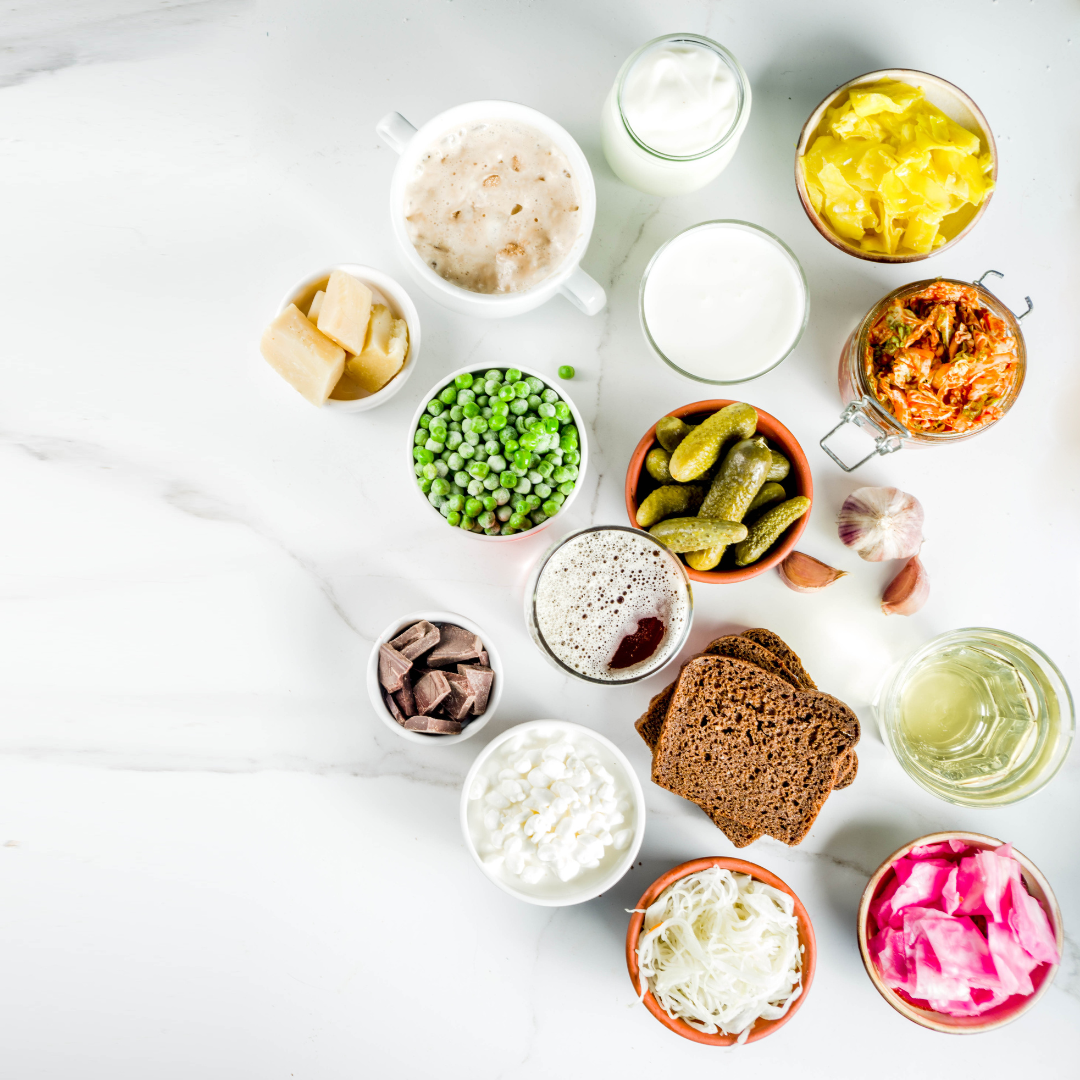
Prebiotics are not discussed as much when it comes to gut health, but are just as important as probiotics. Prebiotics are like fertiliser for our gut and have positive effects on our immune health, insulin sensitivity, inflammation, weight, brain function, and bone health. The most well studied prebiotics currently include Fructans, Galactoooligosaccharides (GOS), and Resistant Starch.

So, what is a “healthy gut”?
Unfortunately, there is no simple formula for a “healthy gut”. A healthy gut for one person may not be healthy to the person standing next to you. For example, a gut microbiome that assists with weight gain would be not beneficial if you were trying to lose weight. Whereas, it would be beneficial for an individual who was trying to gain weight.
In saying this, one of the best things we can do to improve our gut health is to have bacterial diversity. This means, the more different species you have in your gut, the better!
Following the below evidenced based tips can assist with this…
5 top Gut Health tips for bacterial diversity:
- Plant diversity! Aim for at least 30 different plant foods per week. Plant foods include vegetables, fruit, nuts, seeds, wholegrains, and legumes.
- Minimise your intake of processed meats. Examples include salami, bacon, ham, and kabana.
- Include a variety of prebiotic rich foods each week. Examples include green bananas, chickpeas, garlic, onion, and legumes.
- Include a probiotic rich food source each day. Examples include, yoghurt, kefir, kimchi, tempeh.
- Include a source of resistant starch each day. Examples include cooked and cooled, potato, rice, and pasta.
For more gut health tips, check out our blog on “5 Ways to Heal Your Gut At Meal Time.”

Help improve your gut health with Nourish’d meals!
Follow the below meal guide for each of our menus and tick off your 30 plant foods for the week!
Week A:
- Korean Sesame Chicken & Broccoli: 4 x plants (broccoli, red onion, garlic, bamboo shoots)
- Chicken Singapore Noodles: 5 x plants (carrot, capsicum, green beans, brown onion, garlic)
- Spaghetti Bolognese: 5 x plants (zucchini, tomato, carrot, onion, garlic)
- Roast Pumpkin and Pork Hock Soup: 4 x plants (pumpkin, carrot, apple, cashew nuts)
- Slow Cooked Beef Stew: 7 x plants (tomato, sweet potato, carrot, peas, onion, mushroom, garlic)
- Pumpkin Risotto: 5 x plants (brown rice, pumpkin, onion, peas, garlic)
- Moroccan Beef & Apricot Tagine: 6 x plants (pumpkin, basmati rice, tomato, chickpeas, onion, apricot)
- Chicken Caesar Salad: 3 x plant (chickpeas, lettuce, garlic)
- Paleo Fuel Muesli: 9 x plants (sunflower seeds, pepita, sesame seeds, linseed, cashew, slivered almonds, macadamias, blueberries, cranberries)
- Chia Pudding: 2 x plants (berries, chia seeds)
Week A Total: 31 different plants!
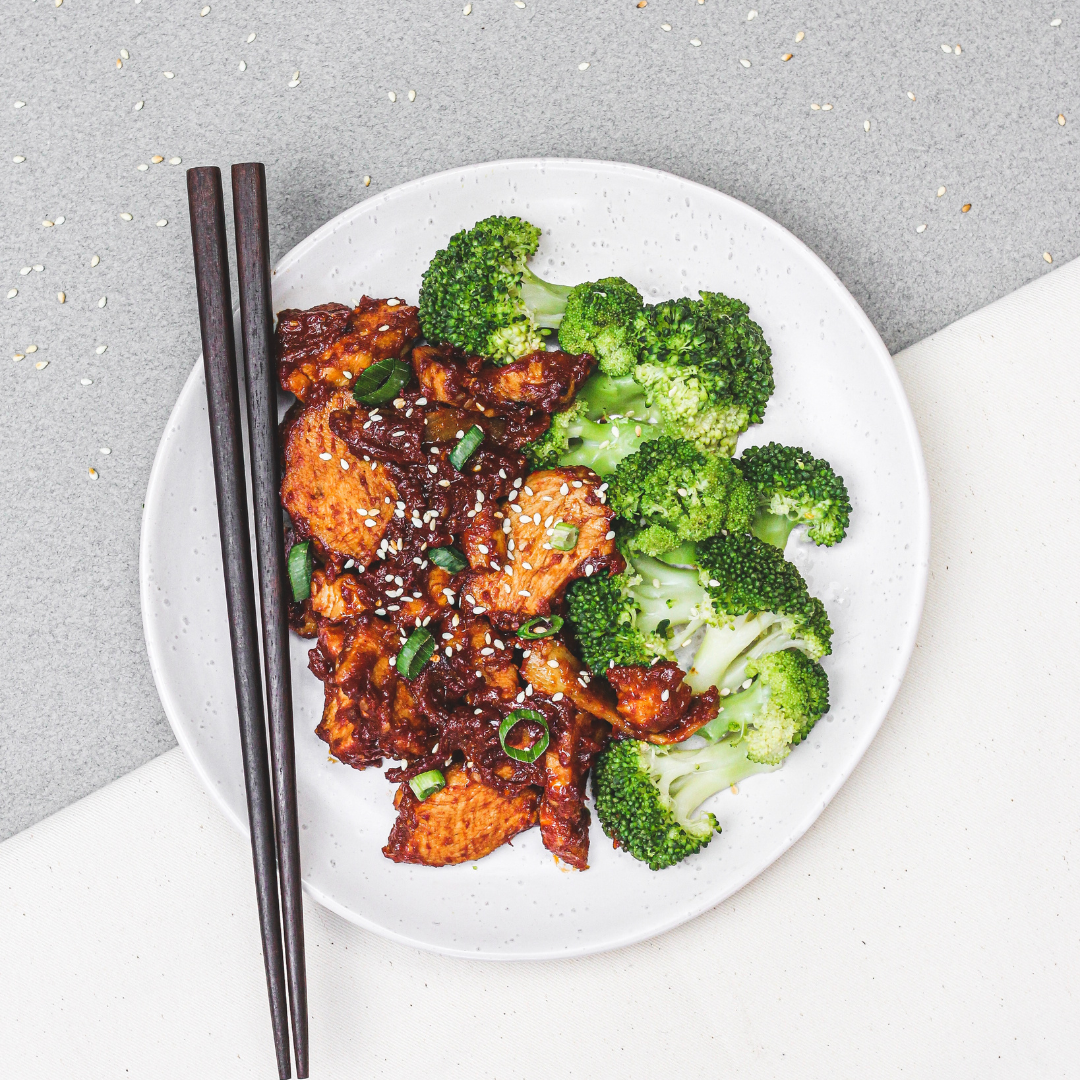
Week B:
- Butter Chicken with Cauliflower Rice: 8 x plants (cauliflower, capsicum, carrot, almonds, sweet potato, zucchini, onion, garlic)
- Thai Green Curry: 7 x plants (broccoli, bamboo shoots, cashew nuts, baby spinach, brown onion, capsicum, garlic)
- Pulled Barbeque Brisket: 6 x plants (sweet potato, carrot, kale, cabbage, garlic, onion, tomato)
- Honey Mustard Chicken: 4 x plants (broccoli, green beans, brown onion, almonds)
- Slow Cooked Beef Stew: 7 x plants (tomato, sweet potato, carrot, peas, onion, mushroom, garlic)
- Paella: 4 x plants (brown rice, tomato, capsicum, onion)
- Lamb Shank Scotch Broth: 7 x plants (carrot, onion, celery, swede, quinoa, fennel, garlic)
- Savoury Mince with Baba Ganoush: 7 x plants (eggplant, zucchini, mushroom, tomato, capsicum, spinach, onion)
- Paleo Fuel Muesli: 9 x plants (sunflower seeds, pepita, sesame seeds, linseed, cashew, slivered almonds, macadamias, blueberries, cranberries)
- Chia Pudding: 2 x plants (berries, chia seeds)
Week B Total: 32 different plants!
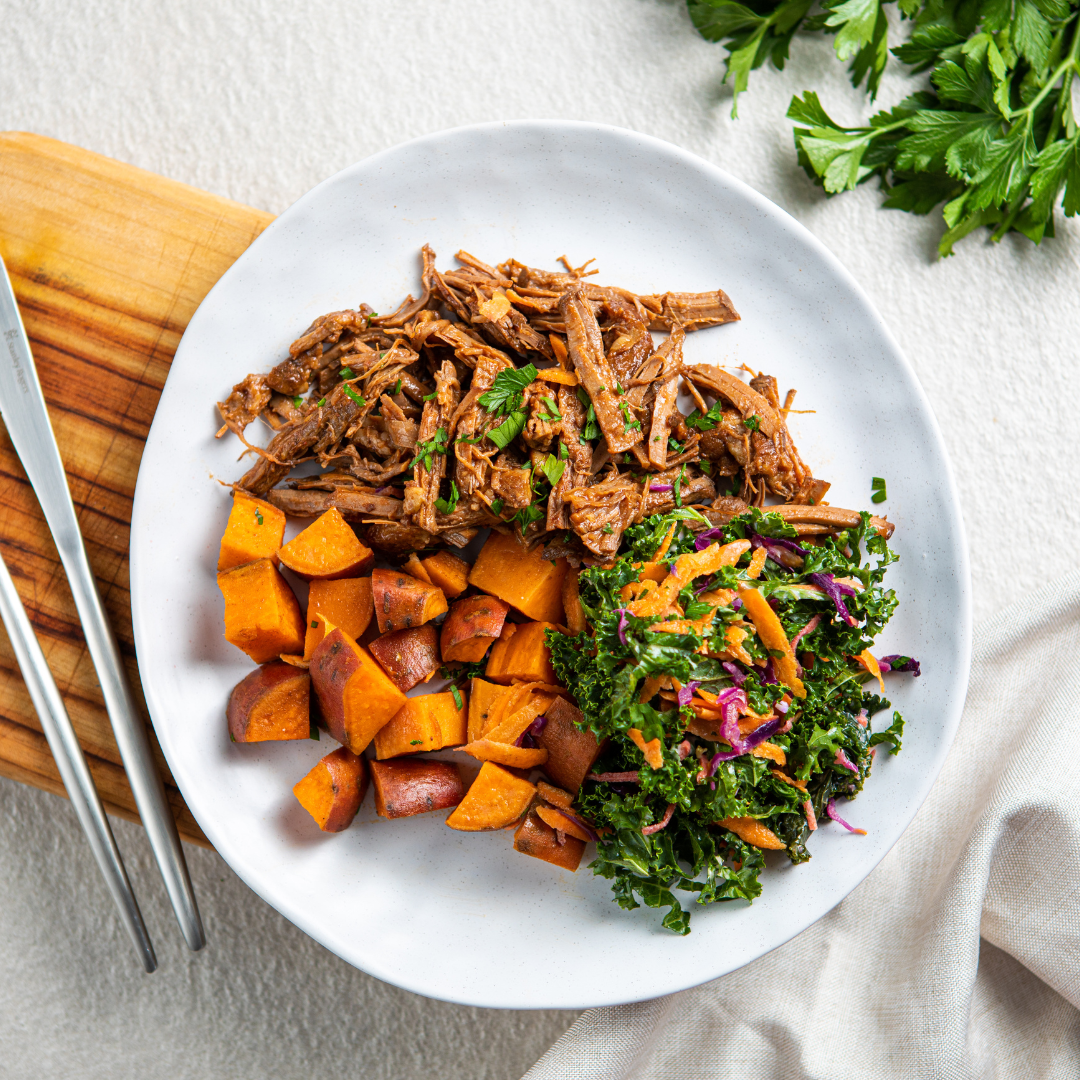
Week C:
- Beef Stroganoff: 5 x plants (mushroom, sweet potato, beetroot, capsicum, onion)
- Cottage Pie: 5 x plants (zucchini, carrot, onion, garlic, potato)
- Nasi Goreng: 8 x plants (cauliflower, carrot, snow peas, capsicum, onion, red cabbage, almonds, garlic)
- Paleo Pumpkin Lasagne: 5 x plants (butternut pumpkin, cauliflower, onion, tomato, garlic)
- Slow Cooked Beef Stew: 7 x plants (tomato, sweet potato, carrot, peas, onion, mushroom, garlic)
- Satay Chicken with Cauliflower Rice: 4 x plants (cauliflower, capsicum, onion, garlic)
- Beef Fajita: 5 x plants (capsicum, tomato, onion, garlic, basmati rice)
- Chicken Pesto Penne: 5 x plants (broccoli, spinach, rocket, cashew, garlic)
- Paleo Fuel Muesli: 9 x plants (sunflower seeds, pepita, sesame seeds, linseed, cashew, slivered almonds, macadamias, blueberries, cranberries)
- Chia Pudding: 2 x plants (berries, chia seeds)
Week C Total: 31 different plants!
To explore our range of gut friendly meals, visit https://nourishd.com.au/menu
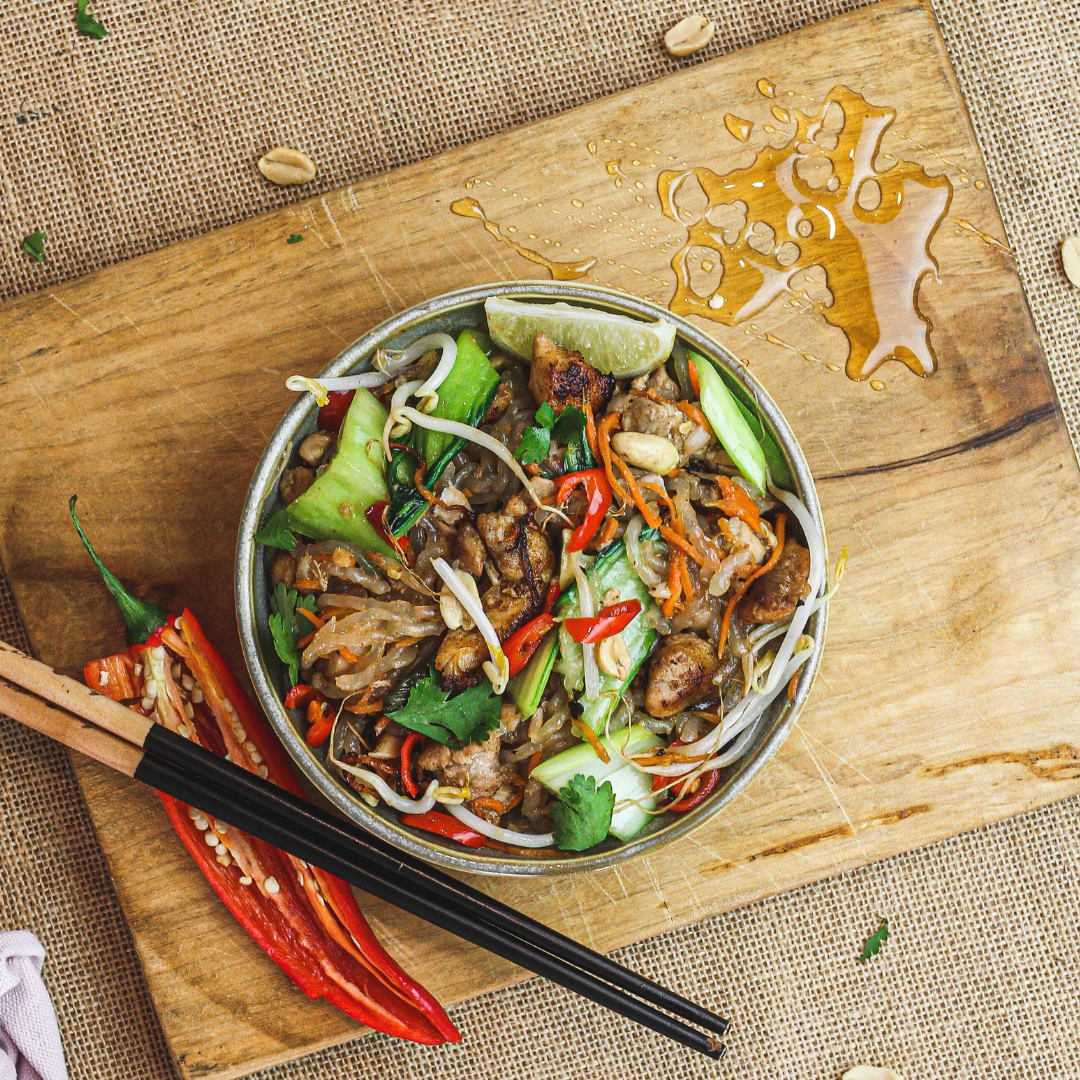
For more gut-health reads, check out these blogs!
The Importance of Gut Health, visit https://nourishd.com.au/blogs/blog/the-importance-of-gut-health
5 Ways to Heal Your Gut At Meal Time, visit https://nourishd.com.au/blogs/blog/5-ways-heal-gut
The Impact of Gut Health on Your Sleep: Sleep Better, Feel Better, visit https://nourishd.com.au/blogs/blog/gut-health-sleep
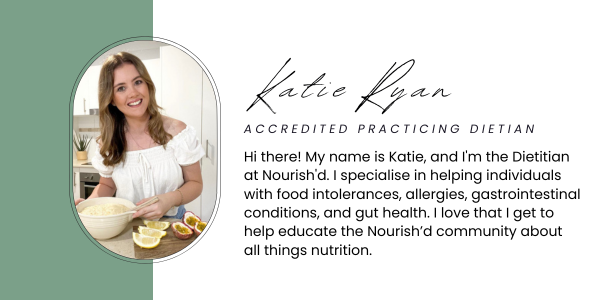


.png)